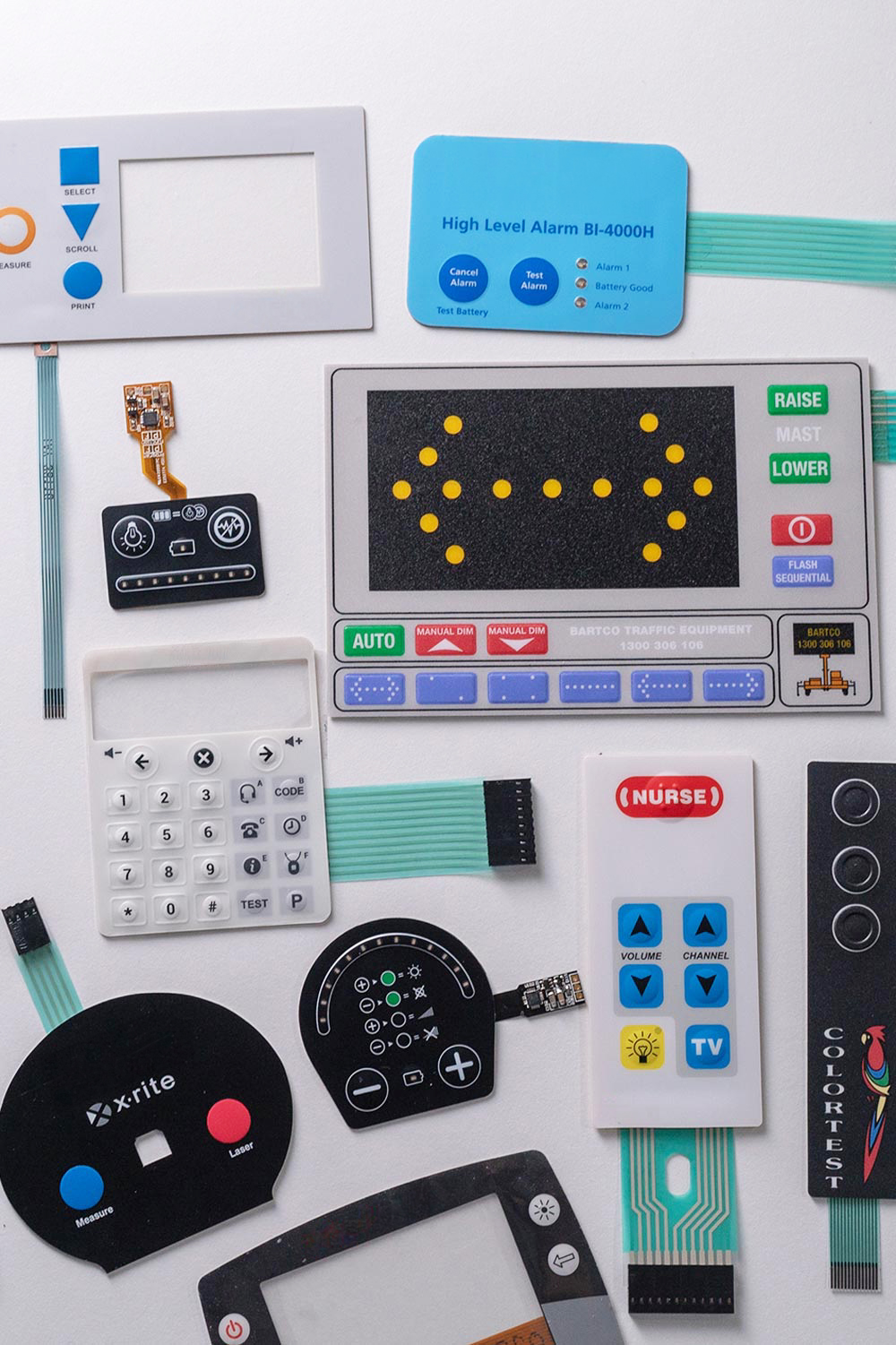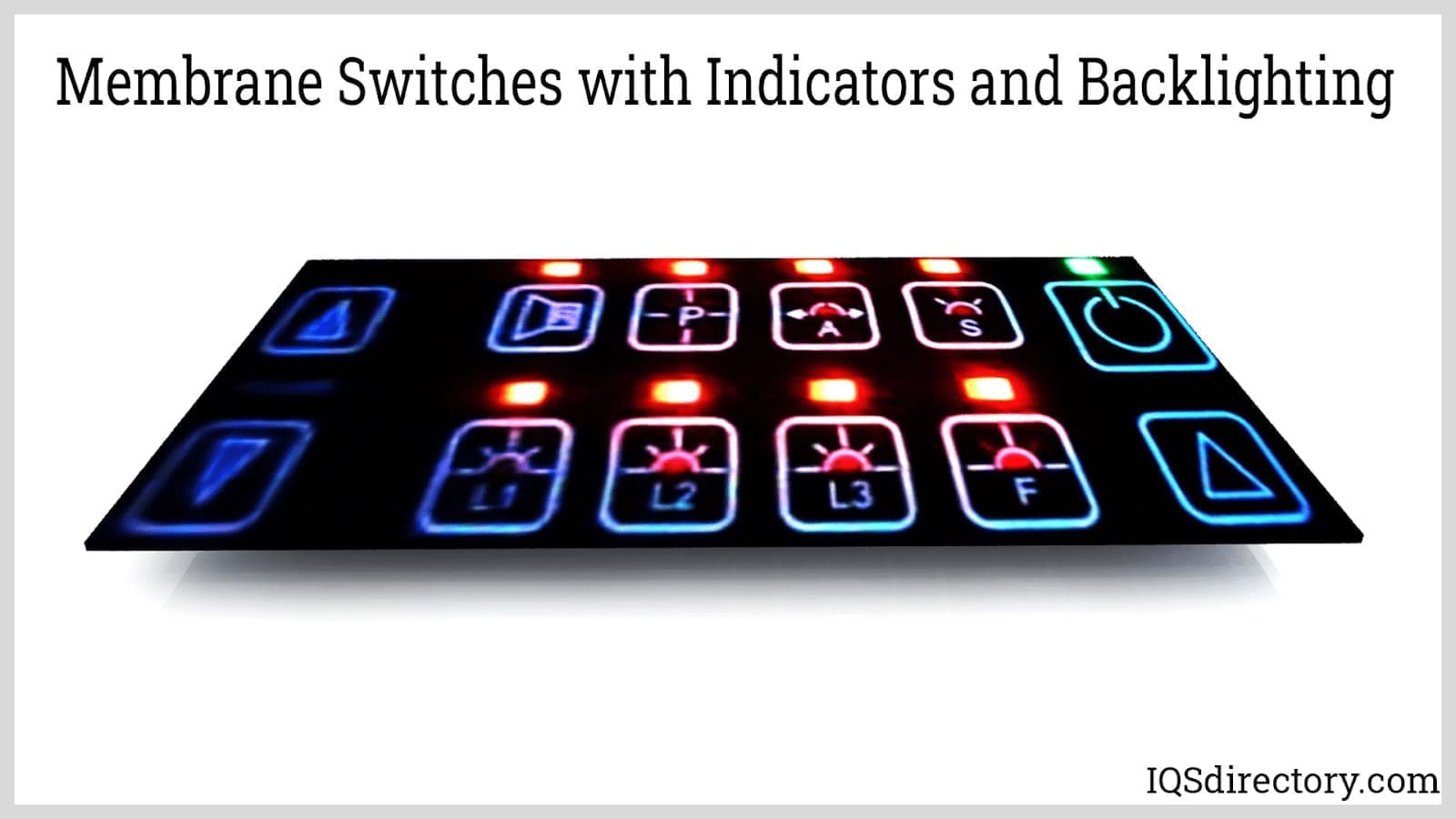Exploring the Different Types and Features of a Membrane Switch
Exploring the Different Types and Features of a Membrane Switch
Blog Article
The Benefits of Using Membrane Layer Changes in Customer Electronic Devices
Membrane layer buttons are significantly identified for their significant advantages in customer electronics, especially in improving individual interaction and enhancing production procedures. The adaptability in design permits for tailored services that fulfill varied customer needs.
Boosted Customer Experience
In today's competitive landscape of consumer electronics, enhanced customer experience is vital; virtually 85% of customers prioritize user-friendly user interfaces. Membrane layer switches over play an important function in achieving this degree of use. Their flat, inconspicuous style permits smooth combination right into numerous gadgets, lowering bulk while preserving performance. This design aesthetic not just enhances the aesthetic allure however likewise contributes to a much more streamlined customer communication.
The tactile feedback given by membrane layer buttons is essential for leading customer actions, guaranteeing that commands are signed up properly. This comments mechanism enhances and lessens errors customer satisfaction, cultivating a positive relationship in between the user and the device. The personalized nature of membrane switches enables manufacturers to customize interfaces to specific individual demands, making devices a lot more easily accessible and welcoming.
Additionally, membrane layer buttons can integrate backlighting and graphic overlays, additionally enhancing exposure and functionality in varied atmospheres. This adaptability makes sure that tools continue to be practical and straightforward, no matter of the setting. Generally, the combination of membrane layer switches over into customer electronic devices considerably enhances individual experience, driving brand name commitment and fulfillment in an increasingly competitive market.
Affordable Production
Customer electronic devices suppliers are regularly looking for ways to balance top quality with price, and membrane switches provide a compelling service for affordable production. membrane switch. These elements are naturally easier than traditional mechanical buttons, which minimizes both manufacturing expenses and complexity. The light-weight layout of membrane switches over permits for reduced shipping costs and much easier combination right into compact gadgets, even more improving their appeal in an open market

Manufacturers can produce membrane layer switches in high volumes, benefiting from economic climates of scale. This mass production capacity guarantees constant quality while significantly decreasing per-unit expenses. Furthermore, the products utilized in membrane buttons, such as polyester and polycarbonate, are commonly cheaper than those required for standard button innovations, contributing to total price financial savings.
The manufacturing procedure for membrane layer switches typically needs less actions and less labor compared to various other switch kinds. This structured method not just conserves on labor costs but additionally speeds up time-to-market, permitting companies to respond promptly to consumer demand. Consequently, the mix of decreased product costs and reliable manufacturing procedures positions membrane switches over as a clever financial investment for producers intending to deliver high-grade customer electronic devices at competitive rate factors.
Style Adaptability and Personalization
While typical mechanical buttons frequently enforce restrictions on style as a result of their mass and needed installing systems, membrane layer buttons offer unrivaled versatility and personalization alternatives for customer electronics. This ingenious innovation enables designers to develop sleek, inconspicuous user interfaces that can seamlessly integrate into various product looks, from smart devices to kitchen area home appliances.
Membrane layer buttons can be created in essentially any type of form or size, enabling producers to tailor the format to certain ergonomic and practical demands. This flexibility not just boosts individual experience however also permits imaginative styles that line up with brand identification. Moreover, using printed graphics on membrane switches over uses the possibility for detailed layouts and dynamic colors, which can be quickly changed without significant price ramifications.
Additionally, membrane buttons can incorporate several performances into a single layer, minimizing the demand for multiple components and streamlining Discover More Here assembly procedures. This streamlined style strategy minimizes space and weight, making it optimal for small consumer electronic devices. Overall, the style adaptability and customization capacities of membrane switches over empower makers to innovate, inevitably resulting in even more appealing and straightforward items.
Toughness and Reliability
As technology continues to progress, the sturdiness and integrity of membrane layer switches have actually come to be crucial factors to consider for suppliers in the customer electronics industry. Membrane switches are created to stand up to rough environmental conditions, including temperature level fluctuations, moisture, and dust exposure. Their robust construction commonly entails multi-layered products that give a reliable obstacle against contaminants, guaranteeing durability and constant efficiency.
Along with environmental resistance, membrane switches over deal exceptional mechanical dependability. Unlike conventional mechanical buttons, which might wear out with time, membrane layer changes use a closed style that decreases the threat of mechanical failing. The absence of moving basics components not just improves their life expectancy but also minimizes damage, making them excellent for high-usage applications.
Furthermore, membrane layer switches can endure a substantial variety of actuations without loss of capability, commonly exceeding numerous cycles (membrane switch). This longevity equates to lower replacement costs and lowered downtime for consumers and makers alike. On the whole, the combination of ecological durability and mechanical reliability makes membrane layer changes a tactical choice for customer electronics, guaranteeing that devices stay effective and operational throughout their designated lifespan

Streamlined Product Development
The resilience and reliability of membrane layer switches significantly add to structured product development in the customer electronic devices market. By incorporating these switches early in the design process, suppliers can lower the complexity and variety of elements called for in their items. Membrane layer switches are lightweight and portable, permitting for extra effective room utilization within tools, which can cause simplified setting up processes.

The ease of making membrane switches likewise plays an important role in item advancement. With contemporary printing methods and materials, manufacturing can be scaled effectively, reducing and Full Report decreasing lead times waste. This leads to reduced production costs, boosting total earnings.

Final Thought
Finally, membrane layer changes substantially improve consumer electronics by supplying an enhanced user experience, affordable manufacturing procedures, and flexible design options. Their durability and integrity make certain constant efficiency in various settings, while streamlined product growth assists in quicker time-to-market. These benefits jointly add to the innovation and capability of consumer devices, dealing with the evolving needs of customers properly. The integration of membrane switches represents a calculated choice for suppliers seeking to optimize item design and efficiency.
Membrane switches are increasingly identified for their significant advantages in customer electronic devices, particularly in improving individual communication and streamlining production processes. Furthermore, the products made use of in membrane switches, such as polyester and polycarbonate, are commonly less costly than those needed for standard button modern technologies, contributing to general price financial savings.
The production process for membrane layer switches usually requires fewer steps and less labor compared to other switch types. Unlike standard mechanical buttons, which might use out over time, membrane layer switches over make use of a closed design that reduces the risk of mechanical failure.In conclusion, membrane changes significantly enhance consumer electronics by providing an enhanced individual experience, affordable production processes, and flexible design options.
Report this page